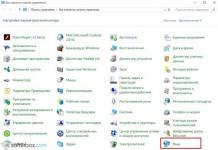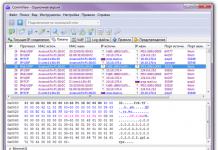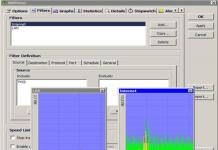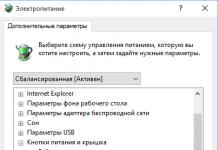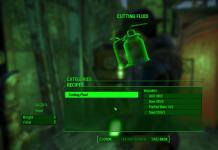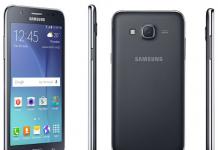The problem “iTunes does not see iPhone” is as old as the very first iPhone and sometimes even advanced users cannot solve it. However, often everything is resolved very simply - just follow a few basic steps.
You can find dozens of different methods on the Internet, half of which are either not relevant for the latest version of iTunes or are too confusing. In fact, everything is solved simply.
First of all, you need to make sure that each element is working:
USB port. iTunes does not see iPhone due to a failed USB port; connect your iPhone, iPad or iPod Touch to another USB port, preferably located on the back wall of the system unit
USB cable. Use a different wire
Computer. A malfunction of the Apple Mobile Device results in iTunes not recognizing the iPhone. Changing your computer, if possible in your situation, may restore functionality
BY. Uninstall and reinstall iTunes by downloading the latest version of the distribution from the official website.
If primitive measures do not help solve the problem, it’s time to get to the root of the situation. Please note: Instructions vary for Windows XP, Windows 7 and Mac.
What to do if iTunes does not see iPhone in Windows XP
Go to Control Panel -> Administration -> Services
Click on Apple Mobile Device and press Stop the service
Start service
What to do if iTunes does not see iPhone in Windows 7 and Windows 8
Disconnect your iPhone, iPad, or iPod Touch from your computer and close iTunes
Go to Control Panel -> Administration -> Services
Select an item Apple Mobile Device and press Stop the service
After making sure that the service has stopped, in the same window, click Start service
Wait for it to fully launch and connect your iPhone or other Apple device to your computer
If everything went well, specify in the service properties Apple Mobile Device startup type “ Auto”
What to do if iTunes does not see iPhone in Mac OS X
- Disconnect your iPhone, iPad, or iPod Touch from your computer and close iTunes
- Remove by moving to Cart:
2. 1. iTunes icon from the launcher (Dock)
2. 2. iTunes folder(Libraries -> iTunes)
2. 3. File AppleMobileDevice.kext, finding it at the address System -> Libraries -> Extension
2. 4. File AppleMobileDeviceSupport.pkg, finding it at the address Libraries -> Receipts - Restart your computer
- Clear Cart and restart your computer again
- Download the latest version of the iTunes distribution for Mac from the official website and feel free to connect your device
As you can see, there is nothing difficult about restoring iTunes functionality. Of course, there are rare exceptions, for example, if the problem lies in the hardware of the devices. In such cases, ask questions on our forum, experienced users will tell you what to do in such a difficult situation.
List of useful topics:
- How to transfer music to iPhone or iPad without iTunes (the best way)
- Setting up MTS Internet on iPhone
- How to delete photos from iPhone but save to iCloud
Please rate this article 5 stars if you like this topic. Subscribe to us Telegram, In contact with , Instagram , Facebook , Twitter Viber Zen , YouTube.
Please rate:
Despite the fact that modern iOS devices can easily do without a computer, there are scenarios in which you still have to turn to it. It is quite logical that at the intersection of technologies certain rough edges may arise, and it is precisely these issues that we will try to understand in this material.
One of the common problems with iTunes is the inability to detect the connected device. There may be several reasons for this, but often a failure occurs in the trusted connection mechanism, when keys are saved on both gadgets for subsequent authorization. By default, the “Trust this computer” request should appear the next time you connect, but recently the author encountered the exact opposite situation, when after a negative response from the user the request was not repeated. The problem can be solved, as expected, in a few simple steps.
Let's start, as expected, with the “native” environment for iOS and iTunes - the OS X operating system. Of course, due to software and hardware integration, problems arise here less often, but no one is immune from accidents. So, if your iPhone stubbornly refuses to trust your Mac, you can try clearing the contents of the special Lockdown system directory. To do this, disconnect the iOS device from the computer and execute the key combination [ cmd]+[shift]+ [G] (or select Go to Folder from the Go menu in the OS X menu bar) and go to /var/db/lockdown/. In the window that opens, you will see one or more (depending on the number of synchronized devices) certificate files that need to be deleted.

After that, we connect the gadget and answer the question about trusting the computer in the affirmative. The device should now be detected by the system.
For Windows OS, the “perseverance” of which your humble servant encountered, the essence of the procedure remains the same. The only difference here, besides the different location of the “culprit,” is the need to display hidden files and folders. To do this, open the Control Panel from the “Start” menu and go to the “Folder Options” section, where on the “View” tab we select the option of the same name. As for the address, it varies for different versions of Windows.
Windows XP: C:\Documents and Settings\All Users\Application Data\Apple\Lockdown

Open "Device Manager", located in the Control Panel in Windows 7 and in the "System" sub-item in Windows XP Right-click on the line with the required Apple device, select “Update driver” from the context menu, then “Search for drivers on this computer” and “Select a driver from the list of already installed drivers” Click on the “Have from disk” button (if it is not available, you can select the “Mobile phone” or “Storage device” category and click on the “Next” button, after which the button will appear)
In the “Install from Disk” dialog box, click on the “Browse” button Let's go to the address C:\Program Files\Common Files\Apple\Mobile Device Support\Drivers. Select the file usbaapl(in 64-bit editions of Windows it is called usbaapl64) and click “Open”. If the folder does not exist, or the required file is missing, look for it in the directory C:\Program Files (x86)\Common Files\Apple\Mobile Device Support\Drivers
Click on the “OK” button in the “Install from disk” dialog box. We hope these tips will help your gadgets find a common language. As usual, don’t forget to look where you can ask a question regarding the use of Apple technology, send screenshots
To synchronize iPhone data with another computer or iOS device, you need iTunes. Sometimes errors may appear during the process, and the device does not appear in the list of available ones. Next, we will explain in detail why the iPhone does not connect to the computer via USB and what to do to fix the problem.
Possible problems
If, after connecting the iPhone to the computer (Windows, macOS), the smartphone does not appear in iTunes or the list of devices, then there may be several reasons for this. Let's look at the main problems and ways to solve them:
- You have an old version of iTunes installed on your computer. Try downloading updates through the settings or completely reinstall the program (the distribution is available on the official website).
- The version of the operating system installed on the computer does not meet the program requirements. If you are using OS X, check for updates and download them if necessary. Remember that iTunes is only available for Windows and macOS.
- Lack of drivers. If charging is in progress, the smartphone is detected by the device, but cannot synchronize with the program. Make sure that all necessary drivers (Apple Mobile Device and others) are installed on your PC or Mac. They download automatically the first time you connect your iPhone to your computer. If necessary, download them from the official Apple website.
- Faulty connector, cable. If the computer no longer sees the smartphone, then the reason may be a clogged or faulty USB connector on the PC or iPhone. Try using a different cable (only the original one).
- The presence of viruses on your computer or smartphone. Conduct a full system scan and eliminate possible threats. After that, try reconnecting your iPhone to your PC.
Sometimes the connection is invisible to the computer due to installed antivirus software or other security monitoring programs blocking the connection. Try temporarily disabling them and only then try synchronizing data again.
Connecting iPhone to computer via USB
If you want to view files stored on your iPhone from your computer, create a backup copy, or perform other actions, then connect it to your computer via USB. Procedure:
- Take the original cable from the iPhone and use it to connect the device and PC.
- Wait for the drivers to install automatically. If necessary, download them from the official website or using third-party software.
- Launch iTunes. If you do not have the program, then download the distribution kit (available for Windows and macOS).
- Wait until the iPhone icon appears in iTunes and the device appears in the list of available ones. After this, a green check mark will appear in the tray.
- Go to the Review tab to get detailed information about your smartphone.
After this, you will be able to create backups, reset the device to factory settings, and perform other actions. After connecting your iPhone via USB, you can synchronize data via Wi-Fi.
For normal data synchronization between your computer and smartphone, download and install updates for iOS on time. You can check availability through the settings.
Reinstalling drivers
If you are confident in the integrity of the cable and connector, but the computer does not detect the connected device, then most likely the synchronization problem is due to a driver malfunction. Disconnect all iOS devices from your PC and follow these steps to reinstall them:
- On a Windows computer. Open Device Manager and find Portable Devices in the list. A list of available drivers will appear. Right-click on “Apple Mobile Device Driver” and select “Update”. If this does not help, then completely remove the driver.
- On a MacBook. Connect your iPhone and unlock your device. On your computer, go to the Apple menu. Here, find the “System Information” section. On the left side of the window that opens, find the “USB” item. You will then see available third-party software on the right. Remove it.
iPhone drivers will be reinstalled on your computer automatically using iTunes. If this does not help, then this can be done through third-party software. For example, copytrans drivers installer.
The computer does not see the iPhone via USB, but is charging
If, when you connect your iPhone to your computer, the smartphone charges, but does not appear in iTunes or the list of available devices, then try the following:
- Disconnect the device and reinstall the drivers. To do this, completely remove all Apple programs (including iTunes) from your computer. This can be done through the Add or Remove Programs utility. After that, download them from the official website.
- Delete temporary Apple Mobile Device files from the Roaming and AppData folders.
- Try connecting your iPhone via a different USB connector, using a different cable (only the original one).
Sometimes the problem may be a clogged or faulty connector. Try gently cleaning it with a brush or blowing it with air.
iPhone won't charge from USB computer
If the computer does not recognize the device and the iPhone does not charge, then most likely the problem is a faulty USB cable. Try using a different cord or connecting your smartphone to another Windows PC or MacBook. Other recommendations:
- Make sure your computer is running and not in sleep or hibernation mode.
- Try connecting the device to another computer, laptop, or use a USB 3.0 connector.
- If an error message appears with the text “Device not supported,” then the problem may be a faulty smartphone cable. Then it will not be possible to eliminate it programmatically.
If the device is not recognized by the computer even when using other USB cables, try contacting a service center. Most likely, your iPhone needs to replace a cable or other faulty component.
iTunes doesn't see iPhone? Judging by the number of requests, this is a fairly common problem that remains relevant to this day. During its existence, a lot of solutions appeared on the Internet, which we decided to put together.
Why is my iPhone not visible?
iTunes may not see your iPhone for a variety of reasons.First of all, it makes sense to rule out the version of the iTunes software glitch by reinstalling the Apple media combiner. You can download the latest version of iTunes from the official website of the developer company.
Next, pay attention to the USB cable you are using. Perhaps it is faulty. In this case, the solution is obvious - replace the connecting cord and try to connect the mobile device to the computer again.
Also take a look at the iPhone charging port. Perhaps it is clogged. You can remove dirt at a service center or, at your own risk, at home using a brush or toothpick.
Is the problem still relevant? Perhaps iTunes does not recognize the iPhone due to errors in the PC software.
The computer does not see the iPhone due to AMDS failure
Malfunctions of the AMDS service are also one of the reasons why iTunes in Windows refuses to recognize the connected device. In this case, a message may appear “This iPhone/iPad cannot be used because... Apple Mobile Device Service is not running."In this case, you need to restart the Apple Mobile Device Service. This is done as follows:
- Close iTunes and disconnect your mobile device from your PC;
- Open a command prompt by pressing the Windows and R buttons simultaneously;
- In the input field that appears, enter services.msc and confirm your action by clicking “OK”. The service console will open.
- Find Apple Mobile Device Service in the list, right-click on the name and select “Properties” from the menu.
- In the properties window that opens, find “Startup Type” and select “Automatic”.
- Then click the “Stop” button, and then “Run”, restarting the service, and “OK”.

- Restart your computer.
- Launch iTunes and connect your device.
iPhone is not visible because it does not trust the computer
It happens that iTunes does not see the iPhone because once the users answered negatively to the question “Should I trust this computer” when they first connected the mobile device to the PC, “Do not trust”. In theory, once trust is denied, iTunes is blocked from accessing the contents of the mobile device, and trust warnings appear again and again when that iPhone or iPad is connected to the computer. In practice, various failures are possible that make a smartphone or tablet invisible to tuna.Along with updating iTunes to the latest version and reconnecting the mobile device to the PC, resetting trust settings and Network settings can solve the problem.
To reset your trust settings, open the Settings app and go to General > Reset > Reset Location Settings. After this, when you connect your iPhone or iPad to your computer, dialog boxes will appear asking you to “trust this computer.”

If this doesn't help, Apple recommends resetting your network settings. This is done as follows: open “Settings” and go to “General” > “Reset” > “Reset network settings”. Please note that this will also reset Wi-Fi networks and passwords, cellular network settings, as well as VPN and APN settings that were previously used.
In addition to a software glitch, the invisibility problem may have its roots in the hardware. For example, the cause may be moisture getting under the device body. Check the liquid contact indicator (where it is located is described in the subsection) and pay attention to the material “iPhone fell into water - what you can and should do, and what you cannot.”
If none of the above helped you, the Apple media harvester still ignores the connected iPhone or iPad, also try looking for a solution in one of our old instructions - If you managed to fix the problem, tell us in the comments which method helped you.
If you haven’t found an answer to your question or something didn’t work out for you, and there is no suitable solution in the comments below, ask a question through ours. It's fast, simple, convenient and doesn't require registration. You will find answers to your and other questions in the section.
Although modern iOS devices can be used independently of a PC, there are situations when you need to use this option. When the computer does not see the iPhone connected via a cable to the USB port, the problem may be in the drivers for iTunes or other services. Sometimes things are simpler because the cable may have broken or the iPhone was simply connected incorrectly. First you need to find out the cause of the problem in order to correct the situation.
Why doesn't the computer see the iPhone?
The most common answer to the question of why the computer does not see the iPhone is a problem connecting to the iTunes service. Sometimes, to solve this problem, you need to click confirm connection to PC on your mobile device. If after this action the PC does not see the iPhone, it is worth checking the functionality of the USB port. Problems may arise due to old versions of programs, applications and drivers for motherboard chipsets. In other cases, consulting a specialist will help to find out the cause of the situation.
Cable breakage
The main reason for the device not connecting to the PC is a faulty or damaged connection cable. Inspect the existing USB cable for damage. There are cases when the contacts inside the wire are damaged (this is difficult to identify visually) and the computer does not see the iPhone. To check, compare the operation of the device with another cable: if the problem is in the accessory, then everything will work out. Have you verified that the cord is damaged? You can solve the problem as follows:
- purchase a new cable;
- try to fix it yourself;
- contact a specialized service center.
iPhone won't connect to computer via USB
The second most common are problems with USB ports: the connection is unstable or the device cannot be detected at all. There may be mechanical damage to the connectors of both the PC and the mobile device itself or their clogging. It is possible that if there is no synchronization, the computer does not see the iPhone: its operating system is outdated. Often there may be a solvable problem with the USB driver. The interaction between the PC and the phone is affected by security programs, which can also prevent the connection.
Error when starting the Apple Mobile Device service
Restarting the mobile device or laptop helps resolve the desynchronization issue. It happens that the PC is unable to start the Apple Mobile Device service. The obstacle may be third-party software or a regular “glitch” that can be corrected by restarting this service. The way to correct incorrect operation is to reinstall, which is done simultaneously with the reinstallation of all iTunes software components.
Why doesn't iTunes see iPhone?
Users of Apple devices constantly encounter problems interacting with their PC. In some cases, iTunes does not work on the computer, in others errors are displayed. Reasons for lack of response may be a faulty cable, USB port, or charger slot. An Apple service status error, old drivers, antivirus blocking, or malware influence occurs. An outdated version of iTunes or the device’s operating system interferes with normal synchronization and, as a result, the computer will not be able to see the iPhone.

Problems with iPhone
A laptop or PC will not be able to recognize the connected device when the iPhone is not working. It may not respond to clicks or touches on the screen, or it may simply turn off. Try to force restart your iPhone. Hold the bottom Volume button (for newer models) or the Home button (for iPhone 6 and below) and the Power button until the “Apple” appears on the display.
On average, this takes about 10 seconds. Otherwise, connect your phone to charge for at least an hour. Typically, the device starts charging within a few minutes. In case of failure, it is worth checking the integrity of the connector, cord and adapter. Parts must be undamaged and clean. After making sure that the charging system is visually in order, but the computer does not see the iPhone, you will have to use the help of a service center.
What to do if the computer does not see the iPhone
Users may encounter an issue where they receive an invalid iPhone response when trying to connect. This often happens due to the Lockdown folder in Apple software files. The fix for this problem is simple. Windows users need to go to the Apple folder in Explorer under Application Data or ProgramData and delete the folder called Lockdown to the trash. After the reboot, iTunes should resume, and the PC will begin to recognize the Apple communicator.
How to connect an iPhone to a computer via USB
Each Apple mobile gadget comes with a connecting cable. It connects an iPhone to a computer via USB using the principle of a flash drive for the purpose of exchanging videos, files, photos and others. In addition, you will need a PC with the latest version of iTunes installed. The disadvantage of this method is the physical attachment to a stationary PC or laptop. The process goes through stages that are important for you to complete:
- connect the USB cable to the device;
- connect to PC;
- Next comes the installation of iTunes (if this program has not been installed previously);
- launching and setting up synchronization.
What to do if iTunes doesn't see iPhone
In cases where the iPhone does not connect to iTunes, you can use the standard set of tips:
- check the integrity of the cable, phone connector, USB;
- allow the connection by clicking OK in the pop-up window on the device screen;
- update drivers, phone or PC OS;
- install the iTunes update or simply restart the program;
- restart Apple Mobile Device;
- Restart your iPhone or PC.

How to reinstall Apple Mobile Device
When Apple Mobile Device Service does not start, it is worth making several attempts to download it again. To do this you need:
- turn off the phone, turn off the iTunes application;
- for Windows OS, write services.msc in the command line;
- in the window that appears, find the service we need and open its properties;
- change the startup type to “Automatic” and stop the service;
- After waiting a little, click the “Run” button;
- Restart your computer and reconnect your iPhone via USB by opening iTunes.
If there is no solution to the problem, you will have to install this software component again. Removing and reinstalling Apple Mobile Device Service involves simultaneously removing and reinstalling all iTunes items. In the Program Files section, search for and delete the iTunes, iPod, Bonjour folders. In the Apple folder, Common Files section, delete Apple Application Support, Mobile Device Support, CoreFP. Then download the new installation file from the Internet and follow the simple instructions on how to connect your iPhone to your computer to restore operation.






